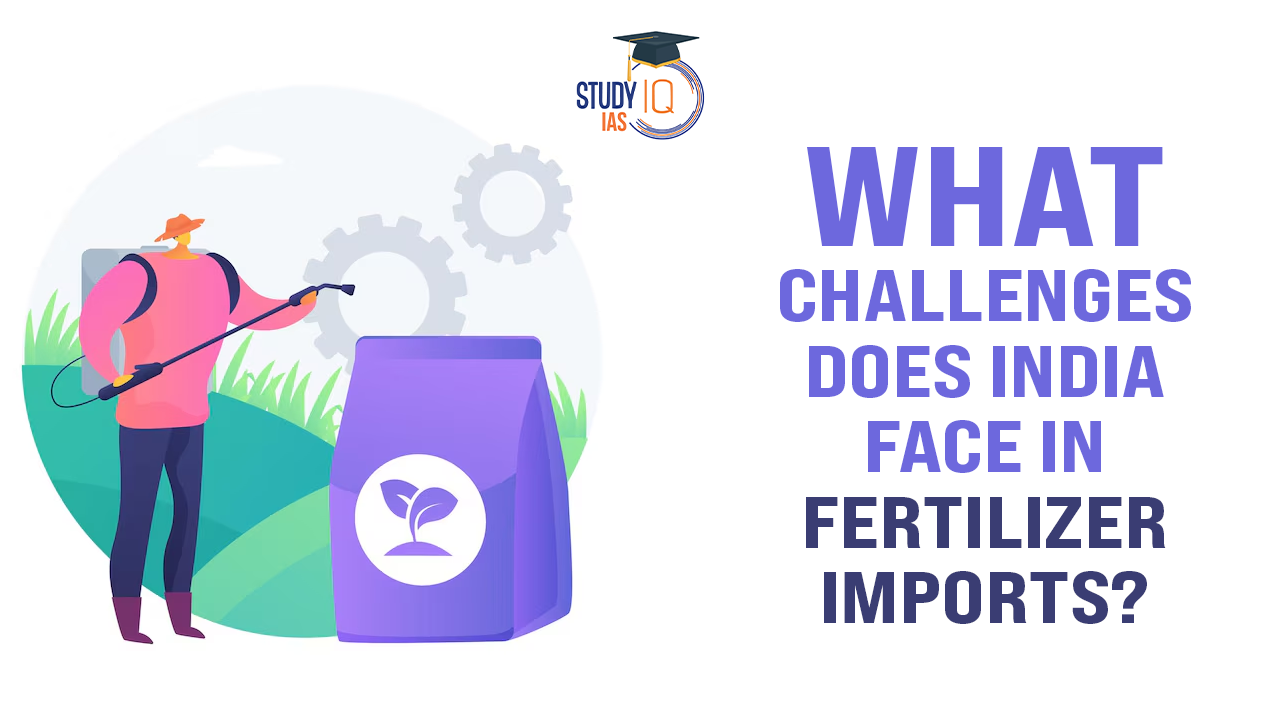Table of Contents
Challenges to Fertilizer Self-Sufficiency in India
- High Import Dependency: India imports a large portion of its fertilizer needs, including 100% of Muriate of Potash (MOP), 50-60% of DAP, and 20% of urea (according to Standing Committee Report (August 2023).
- This reliance makes India vulnerable to global price fluctuations and supply disruptions, especially given geopolitical tensions in major supplier regions like West Asia, Russia, and Ukraine.
- Inadequate Production Capacity: Despite recent increases, domestic fertilizer production does not meet demand, particularly in peak agricultural seasons.
- This shortfall leads to periodic shortages, affecting timely supply during critical crop cycles like the rabi season.
- Environmental and Waste Management Issues: Expanding fertilizer production without sustainable practices could lead to increased waste and environmental degradation. Currently, India lacks robust recycling and waste management policies for fertilizers.
The Need for Self-Sufficiency in Fertilizers
- Agricultural Stability: Reliable access to fertilizers is crucial for consistent crop yields, which are essential for food security, particularly as the rabi season requires timely and sufficient fertilizer supply.
- Economic Independence: Reducing import dependency can alleviate India’s trade deficit and insulate the agricultural sector from international market volatility, especially in times of geopolitical instability.
- Environmental and Social Benefits: A self-reliant approach with sustainable practices (e.g., nano urea and organic fertilizers) would reduce the environmental impact of large-scale chemical fertilizer imports and enhance soil health over time.
- Rural Employment: Increasing domestic fertilizer production offers potential for job creation in rural and semi-urban areas, particularly in new production plants and related infrastructure.
Recommendations for Self-sufficiency and Sustainable Farming
- Increase Domestic Fertilizer Production: Enhance capacity to reduce reliance on imports.
- Adopt New Technologies: Use alternatives like nano urea and natural farming to decrease chemical dependency.
- Policy Support: Establish supportive policies to encourage investments in fertilizer manufacturing.
- Enhance Local Capacity: Invest in domestic production, especially in areas like greenfield gas-based urea plants to boost self-reliance.


 GPS Spoofing and Its Impact in India: A ...
GPS Spoofing and Its Impact in India: A ...
 Amrit Gyaan Kosh Portal: A Comprehensive...
Amrit Gyaan Kosh Portal: A Comprehensive...
 UpLink Initiative: Launched by World Eco...
UpLink Initiative: Launched by World Eco...





















